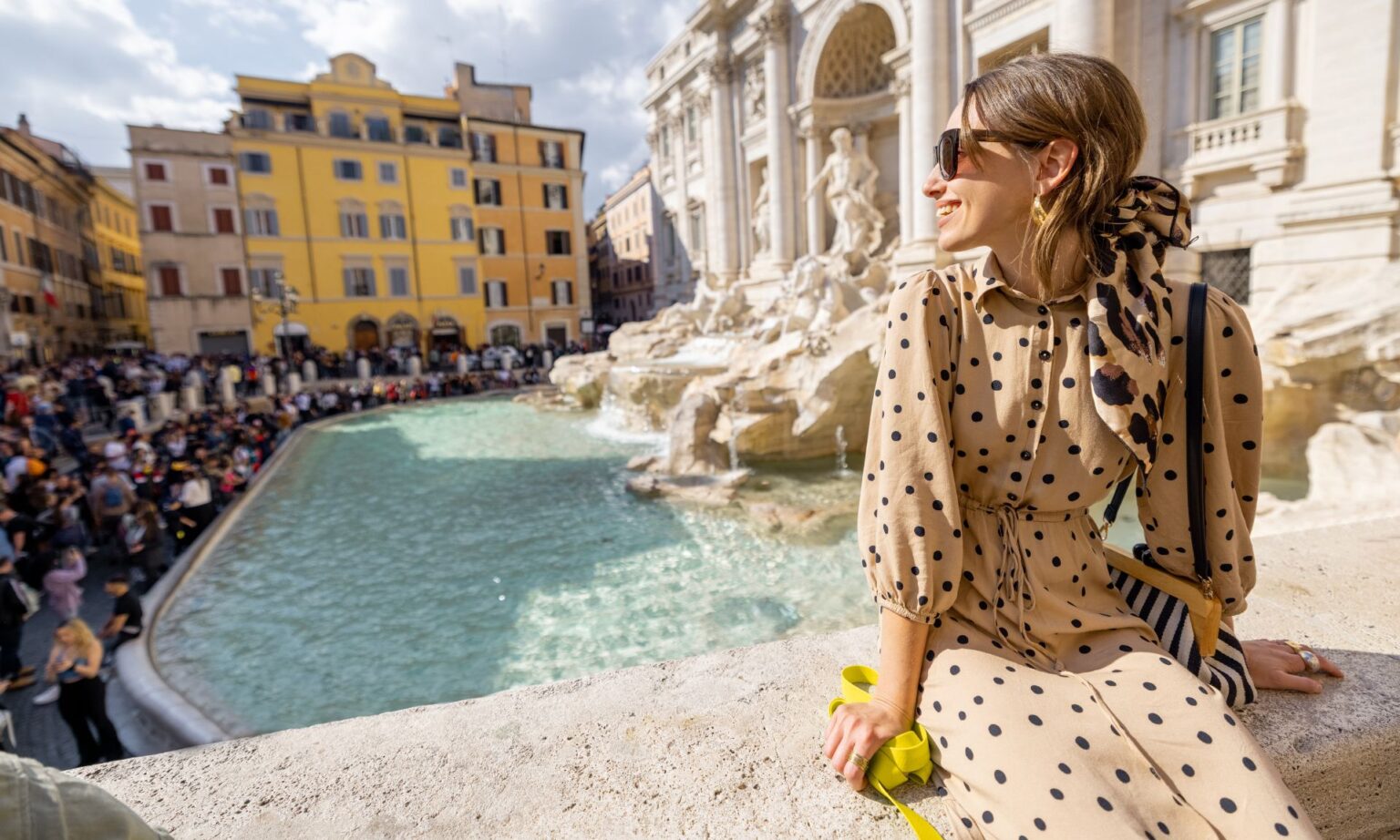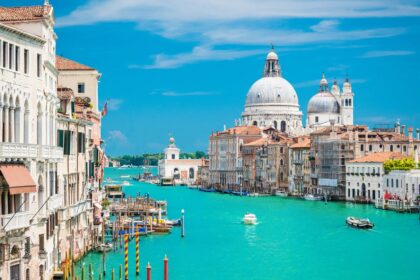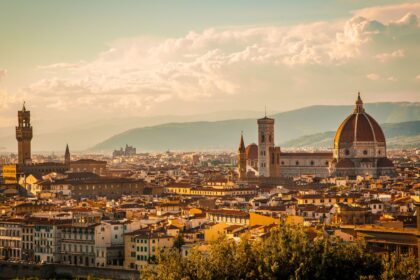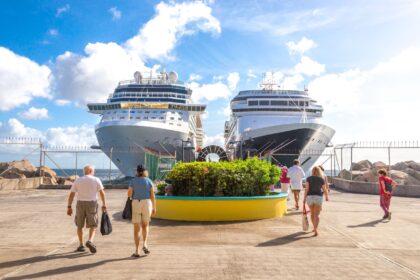Introduction
Rome, the Eternal City, is a treasure trove of history, culture, and culinary delights. With its ancient ruins, awe-inspiring architecture, and delectable cuisine, Rome beckons travelers from around the globe. In this travel guide, we’ll explore the must-visit attractions, local customs, and practical requirements for an unforgettable journey to this enchanting Italian city.
Getting There:
Rome is easily accessible by air, with Leonardo da Vinci Fiumicino Airport being the main international gateway. From the airport, travelers can take a taxi, shuttle, or train to reach the city center. Alternatively, Ciampino Airport serves budget airlines.
Accommodations:

Rome offers a wide range of accommodations, from luxurious hotels to charming bed and breakfasts. The historic center, including areas like Trastevere and Monti, is popular for its proximity to major attractions. Booking in advance is advisable, especially during peak tourist seasons.
The Colosseum: A symbol of ancient Rome, this iconic amphitheater is a must-visit. Consider a guided tour to learn about its fascinating history.
The Roman Forum: Explore the heart of ancient Rome, where temples, basilicas, and arches tell the tales of the city’s glorious past.
The Vatican City: Home to St. Peter’s Basilica and the Sistine Chapel, the Vatican is a sovereign city-state within Rome. Book tickets in advance to avoid long queues.
The Pantheon: A marvel of Roman engineering, this well-preserved temple boasts a stunning dome and impressive Corinthian columns.
Trevi Fountain: Legend has it that tossing a coin into this Baroque masterpiece ensures a return to Rome. Join the crowd and make a wish!
Spanish Steps: A popular meeting place, these steps connect the Piazza di Spagna with the Trinità dei Monti church. Enjoy the views and indulge in some shopping on Via Condotti.
READ ALSO: Explore Italy on a Budget: Your Guide to Affordable Travel
Cultural Etiquette:
Dress Modestly: When visiting religious sites like churches and the Vatican, dress modestly to show respect
Greeting Customs: Italians often greet with a kiss on both cheeks among friends. A handshake is more common in formal settings.
Dining Etiquette: It’s customary to linger over meals in Italy. Don’t rush, and savor each course. Tipping is appreciated but not as heavily as in some other countries.
Cuisine:
Italian cuisine is a highlight of any visit to Rome. Indulge in pasta dishes like carbonara and cacio e pepe, savor authentic Roman pizza, and treat yourself to gelato from one of the city’s renowned gelaterias.
Practical Requirements:
Visa: Check the visa requirements for your nationality before traveling to Italy.
Currency: The currency in Italy is the Euro (EUR). Credit cards are widely accepted, but it’s advisable to carry some cash for smaller establishments.
Language: While many locals speak English, it’s appreciated if you learn a few basic Italian phrases.
Transportation: Rome has an extensive public transportation system, including buses and the metro. Taxis are readily available, but make sure they are licensed.
Rome, with its rich history and vibrant culture, offers an unparalleled travel experience. By embracing the local customs, indulging in the cuisine, and exploring the city’s iconic landmarks, you’re sure to create memories that will last a lifetime. So, pack your bags and get ready to immerse yourself in the timeless beauty of the Eternal City.
Frequently Asked Questions About Traveling to Rome
1. Do I need a visa to visit Rome?
Check the visa requirements based on your nationality. European Union citizens typically do not need a visa for short stays, but others may require one.
2. What is the best time to visit Rome?
Spring (April to June) and fall (September to October) are ideal, with milder temperatures and fewer crowds. Summers can be hot, and winters may bring rain.
3. How do I get from the airport to the city center?
Leonardo da Vinci-Fiumicino Airport has various transportation options, including taxis, shuttles, and trains. Ciampino Airport is also serviced by buses and taxis.
4. Is it necessary to book tickets in advance for attractions like the Colosseum and Vatican City?
It is highly recommended, especially during peak tourist seasons, to avoid long lines. Many attractions offer online ticketing options.
5. What is the currency in Rome?
The currency is the Euro (EUR). Credit cards are widely accepted, but it’s advisable to carry some cash, especially in smaller establishments.
6. How is the public transportation system in Rome?
Rome has an efficient public transportation system, including buses and the metro. Purchase tickets in advance, and consider the Roma Pass for unlimited travel within a certain time frame.
7. Is it customary to tip in restaurants?
Tipping is appreciated but not as obligatory as in some other countries. A service charge may be included in the bill, so check before leaving an additional tip.
8. What should I wear when visiting religious sites in Rome?
Dress modestly when visiting churches and the Vatican. Both men and women should cover their shoulders, and skirts or pants should reach the knees.
9. Is English widely spoken in Rome?
While many locals speak English, especially in tourist areas, it’s always appreciated if you learn a few basic Italian phrases. It enhances the cultural experience.
10. How safe is Rome for tourists?
Rome is generally safe for tourists, but be cautious of pickpockets in crowded areas. Keep an eye on your belongings and be aware of your surroundings.
11. Can I drink the tap water in Rome?
Yes, tap water in Rome is safe to drink. You can carry a reusable water bottle and refill it from the numerous public fountains scattered throughout the city.
12. Are there any local customs I should be aware of?
Italians often greet with a kiss on both cheeks among friends. Respect local customs, such as lingering over meals and enjoying the relaxed pace of life.
13. How can I explore Rome on a budget?
Take advantage of free attractions, like the Trevi Fountain and the Pantheon. Consider purchasing a Roma Pass for discounted entry to museums and unlimited public transportation.
14. What is the tipping etiquette in restaurants?
Tipping is customary but not as high as in some other countries. Round up the bill or leave a small percentage if service is not included.
15. Can I use my credit card everywhere?
Credit cards are widely accepted, especially in tourist areas. However, it’s advisable to carry some cash for smaller establishments and markets.
Conclusion
In conclusion, Rome stands as a living testament to the splendor of the ancient world and the vibrancy of modern Italian culture. This travel guide has endeavored to provide a glimpse into the enchanting city, offering insights into its historical treasures, cultural nuances, and practical necessities.
As you embark on your Roman adventure, remember to embrace the city’s rich history by exploring iconic landmarks like the Colosseum, the Roman Forum, and the Vatican City. Immerse yourself in the local customs, from savoring leisurely meals to greeting locals with warmth.
While planning your visit, consider the practical requirements—checking visa regulations, understanding the currency, and utilizing the efficient public transportation system. Whether you’re tossing a coin into the Trevi Fountain, savoring authentic Roman cuisine, or simply wandering through cobblestone streets, Rome promises an unforgettable experience.
As you bask in the beauty of the Eternal City, may this guide serve as a companion, helping you unravel the layers of history and culture that make Rome a destination like no other. So, pack your curiosity, a sense of adventure, and an appetite for discovery, and let the magic of Rome unfold before you. Happy travels!
In another related article, Should You Visit Paris or Rome? – Choosing Between Paris and Rome for Your Next Adventure







